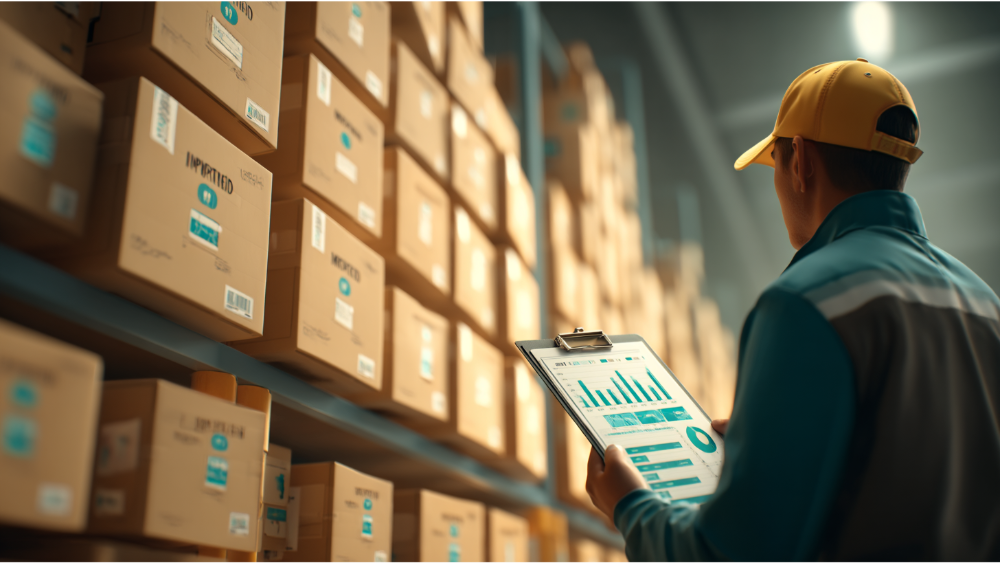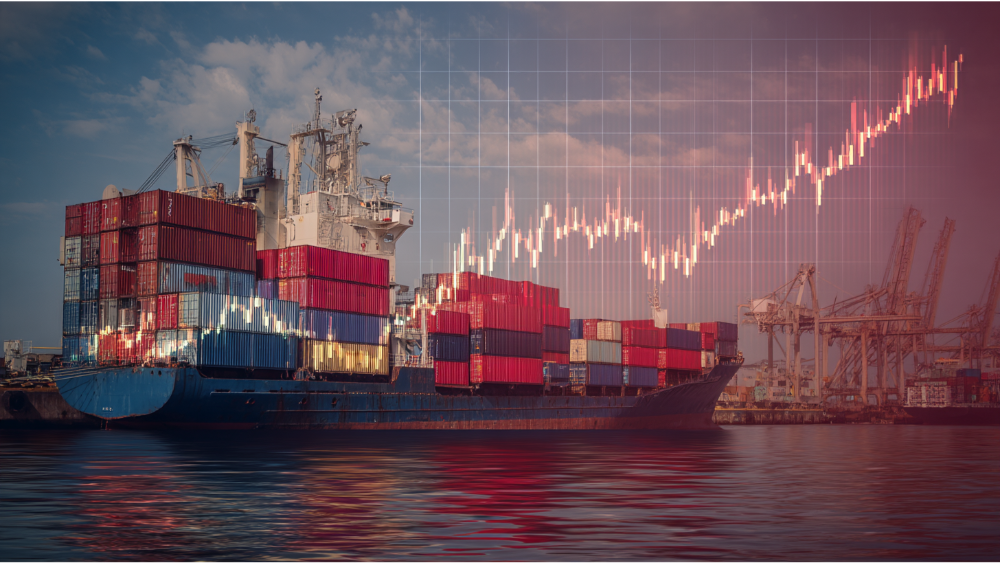Will Tariffs Cause Inflation in 2025?
Tariffs are back in the spotlight in 2025 as a tool of trade policy. The U.S. is imposing new import duties on everything from clothes to electronics following tariff policy decisions from the Trump administration and investors and economists are asking the same question: will tariffs cause inflation? With personal consumption accounting for nearly 70% of GDP, these tariffs could have a big impact on consumer behavior and overall prices.
For high net worth individuals, retirees on fixed income and business owners of complex portfolios, this is more than theory – it’s real money. History shows tariffs can cause inflation and current inflation data suggests this trend may continue in the near term. At Towerpoint Wealth we believe understanding tariff rate changes and their impact on inflation is key to making smart forward looking decisions.
This article will look at how higher tariffs affect overall inflation and personal consumption, what’s happening in 2025 and how you can prepare your portfolio for the changing landscape of the U.S. economy and its trading partners.
Tariffs and Inflation: A Refresher

What Are Tariffs and Why Are They Used?
Tariffs are taxes on imports and the average tariff rate can change with administrations. Tariffs serve several purposes: they protect domestic producers, influence exchange rates and are leverage in geopolitical negotiations. Under president Donald Trump’s “America First” doctrine, steel tariffs and other higher tariffs were implemented, changing long standing relationships with trade partners like the European Union and other countries.
Tariff policy may be framed as helping domestic labor or small business but tariffs are really an indirect tax on American consumers, so importers expect prices to rise – from steel for infrastructure to food from overseas. These tariff pressures are increasingly felt across the real economy as costs ripple through supply chains.
How Tariffs Drive Up Prices and Personal Consumption
Tariffs increase costs for importers and ultimately retailers. The result? American consumers will expect prices to go up across the board. Historically and in today’s case companies will pass those costs along to consumers and raise prices. This increases the Consumer Price Index (CPI) and broader personal consumption expenditures which is the foundation of U.S. economic growth.
For example, steel tariffs implemented by the White House will mean higher costs for manufacturers – from auto plants to construction – so many businesses will have to adjust prices or contracts. When those cost increases move through the supply chain they show up in inflation data and erode purchasing power for American consumers. The ability of companies to maintain pricing power in this environment is critical to their margins and overall business health.
The 2025 Tariff Landscape: What’s Changed and What It Means

Trump’s Tariffs Are Back — What You Need to Know
In 2025, Trump’s tariffs go beyond steel to other goods imports. Apparel, electronics, agricultural products and industrial components are now subject to higher tariffs, with the average tariff rate up big time. This expansion of tariffs is rocking the domestic economy and relationships with trading partners like Canada, Mexico and the EU.
A Yale Budget Lab study, quoted by a Lexington-based senior economist, says these tariffs have already increased short term consumer prices by 1.3%. If sustained, the study says they could push overall inflation above 2% and add as much as $3,800 to household costs per year. That’s a big deal especially for small businesses and American consumers who need stable prices and calm business sentiment.
How Supply Chains Are Adjusting
In response to tariff policy, many businesses are repositioning their supply chains. Some are front loading shipments, others are stockpiling steel and electronic components or finding alternative suppliers in other countries. But these will only provide short term shelter.
Once inventories are depleted, importers and retailers will face higher freight and tariff costs. A June 2025 New York Fed survey of 75% of manufacturers and service providers found 75% are passing on rising costs to consumers and many are marking up non-tariffed goods as well. This shows how far up the food chain tariff rate hikes can go.
Consumer Spending, Personal Consumption Expenditures & Inflation Data
The combination of rising tariffs and weak labor statistics, particularly among hourly and wage earners, has started to alter consumer behavior. As American consumers expect prices to increase, “personal consumption expenditures” begin to slow. That shift in how households manage their money is a leading indicator for the health of the U.S. economy.
In recent months, inflation data has confirmed rising price levels in food, clothing, and even durable goods. Retailers report softening sales volumes in non-essential categories as consumers reel in discretionary purchases. Personal consumption, the backbone of U.S. GDP, could be the canary in the coal mine if inflation starts hurting confidence in the coming months.
Fed Policy, Rate Cuts and Trade Policy

The Fed’s Tightrope Walk on Tariff-Induced Inflation
Fed Chair Jerome Powell has repeatedly mentioned tariffs and trade policy as sources of inflation risk. The Fed paused rate hikes in mid-2025 and is still cautious. The Fed’s chief economist warned that rate cuts before inflation is well under control could un-anchor inflation expectations and make business sentiment worse and slow growth.
How Rate Cuts Could Impact Your Portfolio
If inflation stays high, the Fed may delay rate cuts even as growth slows and we get stagflation. If inflation data confirms moderation and business sentiment turns, the Fed may consider near-term rate cuts to boost spending.
But rate cuts with high inflation can erode fixed income yields and reduce real returns so investors need to re-think the balance between assets that protect against inflation and those that are interest rate sensitive.
Portfolio and Wealth Management Implications
Tariff-Driven Inflation and Erosion of Purchasing Power
Inflation doesn’t just reduce the value of the dollar, it erodes wealth in real terms. For retirees or those drawing down fixed income portfolios, this can mean financial independence is compromised. Rising living costs, energy, healthcare, everyday goods, can outstrip planned distributions and put pressure on long term plans.
Finding Asset Class Winners and Losers
During times of higher tariffs and inflation not all assets are created equal. Commodities (steel, oil, agriculture), infrastructure and TIPS tend to hold or go up. Consumer discretionary and import heavy sectors will get hurt. Diversification across inflation sensitive sectors, energy, real estate and international markets becomes key.
Inflation Resilient Wealth Strategies
Now is the time to review your wealth strategy:
- Rebalance your equity exposure to be in the right sectors for inflation
- Adjust your bond holdings by laddering, shortening or going to floating rate
- For retirees, recalibrate your withdrawal strategy for inflation adjusted planning
- Explore international exposure to hedge against domestic trade policy volatility
- Consider small business and direct investment opportunities that will benefit from the new trade relationships
How Towerpoint Wealth Is Helping Clients Weather the Market Volatility
At Towerpoint Wealth we put our clients first. In a world of shifting trade partners, tariff increases, changing inflation data and trade policy uncertainty our team uses a holistic proactive wealth management approach.
We help clients protect their wealth by:
- Closely watching inflation and labor stats, tariffs and exchange rates
- Rebalancing portfolios to reflect the current state of the US economy and global markets
- Implementing inflation hedges, tax aware strategies and portfolio diversification
- Keeping clients informed to provide clarity, context and confidence in uncertain times
Lessons from History: Tariffs, Trade Wars, and Long-Term Impact

Smoot-Hawley, 2018, and the Ongoing Impact of Tariffs
The Smoot-Hawley Tariff Act of the 1930s triggered retaliatory actions that deepened the Great Depression. The 2018 trade war disrupted global supply chains and increased costs for goods imports. Both examples highlight how tariff policy can reshape global commerce, raise price levels, and soften business sentiment.
Global Trade and Retaliation Risks in 2025
Already, other countries, most importantly the European Union, Canada, and Mexico, have announced counter-tariffs. This tit-for-tat exchange risks slowing trade across major trading partners, elevating goods import costs and depressing GDP. Investors and importers need to monitor the overall impact on global supply and demand.
In this context, business resilience and agility become essential, especially for companies relying on multinational sourcing and complex logistics.
Key Questions to Ask Your Advisor Right Now
Am I properly diversified across inflation-sensitive sectors?
Does my portfolio include exposure to commodities, energy, infrastructure, and international markets that react positively to inflation and higher tariffs?
How will tariffs affect my projected retirement cash flow?
Are my personal consumption expenditures assumptions still realistic if price levels continue to rise?
Are there tax strategies I should employ during high-inflation periods?
Tax-loss harvesting, strategic Roth conversions, and inflation-indexed income tools can protect wealth and sustain income.
Frequently Asked Will Tariffs Cause Inflation Questions
How much have 2025 tariffs increased inflation so far?
Current estimates show a 1.3% increase in the Consumer Price Index (CPI) from the tariffs in April 2025 alone, with a 2.3% cumulative impact. These price increases are hitting hardest in categories like apparel, electronics and food. The ripple effect of tariffs is causing price hikes throughout the US economy as companies pass on higher costs from imported goods to consumers.
Are tariffs the main cause of inflation in 2025?
Tariffs aren’t the only factor, but they are undeniably one of the biggest drivers behind the current wave of higher prices. In industries where the U.S. relies heavily on imported goods, these new duties have added significant cost pressure. Combined with supply chain bottlenecks, rising wages, and volatile exchange rates, it’s clear that tariff policy in 2025 has helped raise inflation across key sectors.
Experts agree that the U.S. trade actions, particularly those aimed at China and other nations like the European Union, have disrupted pricing dynamics and made it more expensive for both consumers and businesses. The vast majority of economists point to tariffs as a major accelerant of inflation, especially when layered on top of other structural economic challenges.
Will inflation rise more if more tariffs are introduced?
Yes. Historically higher tariffs lead to price increases across both directly affected imports and even unrelated goods due to supply chain complexity and cost pressures. If the average tariff rate goes up further, economists expect more price hikes especially in core consumer sectors. This could force the Federal Reserve to keep or even tighten monetary policymaking borrowing more expensive for consumers and businesses.
How do tariffs affect my average portfolio?
Tariffs can affect the US economy in multiple ways, causing higher prices, squeezing corporate margins and dampening earnings expectations. This means increased volatility and potential underperformance in sectors that rely on imported goods or are sensitive to consumer demand. Sectors like consumer discretionary, technology and retail are most vulnerable.
On the flip side, inflation-protected assets and commodities may benefit. A diversified portfolio that accounts for tariff policy, monetary policy and global trade shifts can help mitigate these risks.
What should I do now to hedge against future inflation?
To stay ahead of inflation risk and prepare for price hikes consider:
- Increasing exposure to real assets like commodities and infrastructure
- Reduce fixed income duration
- Review international exposure (especially non-US)
- Talk to your advisor about flexibility for monetary policy and tariff rates
Conclusion: What the Tariff Impact Means for Your Wealth
Tariffs are back in full swing in 2025 and they’re causing inflation in ways that matter. Steel tariffs, apparel duties and an overall increase in the average tariff rate are already driving up prices and personal consumption expenditures.
While most businesses initially tried to absorb the costs, pressure is mounting across sectors and now we’re seeing broader pass throughs to consumers. We’ll see this play out in upcoming inflation data and real world spending patterns.
Meanwhile, other countries, including key U.S. trading partners, are retaliating and it’s complicated global trade flows, increasing the cost of imported goods and introducing more volatility into the investment landscape. This is why it’s important to adapt your portfolio to both domestic and international economic changes.
For investors the path forward is clear: stay diversified, watch trade policy and consumer behavior and prepare your portfolio for market chaos and upside. At Towerpoint Wealth we can help you navigate this with confidence and clarity.
Schedule a call with Towerpoint Wealth to make sure your portfolio is inflation resilient and ready for the evolving trade dynamics in 2025 and beyond.




